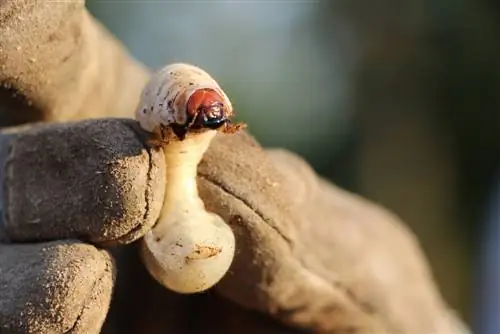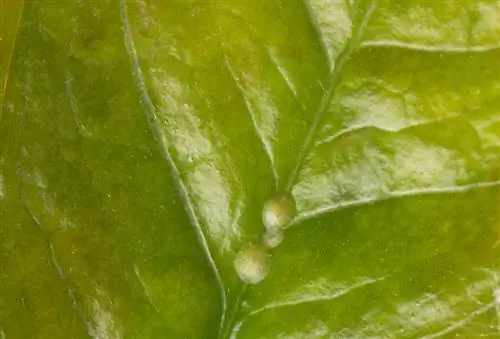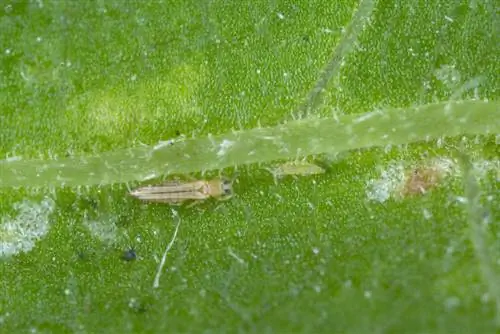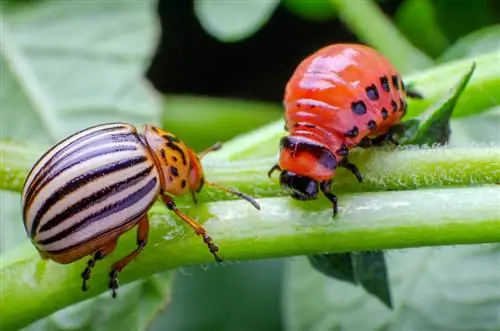- Author admin [email protected].
- Public 2023-12-16 16:46.
- Last modified 2025-01-23 11:22.
June beetle larvae are among the most damaging types of grubs. In a garden with a lawn and vegetable growing, they can definitely cause trouble. So it's useful to know how to identify the pests and how to best deal with them.
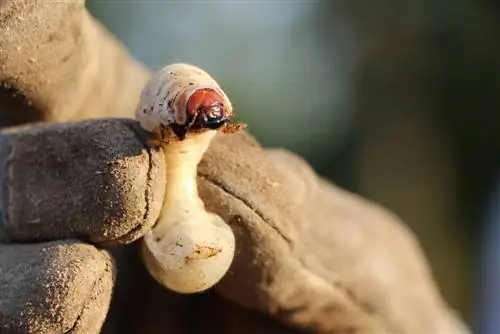
How do you recognize and control June beetle grubs in the garden?
June beetle grubs are approximately 3 cm long, beige-cream-colored larvae with a brown head that feed on plant roots. If infested, dig up the soil, remove dead plants and use predatory nematodes to control the pests. Avoid chemical pesticides.
Appearance and lifestyle of June beetle grubs
The larvae of June beetles not only look very similar to those of May beetles, but also their way of life. Finally, the two species of beetles are closely related to each other and also have a great deal of similarity to each other in the adult stage. However, the developed June beetles are significantly smaller than May beetles, while the larvae hardly differ from each other in size.
We can note the following external characteristics for June beetle grubs:
- C-shaped curvature typical of grubs
- around 3 cm long
- beige to creamy white color, brown head
- 3 long, bent pairs of legs in the chest area
- Moving on your stomach
Of other grub species, June beetle grubs can be recognized primarily by their way of life. In contrast to useful grub species such as those of the rose or rhinoceros beetle, they do not feed on dead plant material and are therefore not found in dead wood or compost heaps. Like cockchafer larvae, they live in the ground throughout their entire two to three year development phase.
Damage caused by June beetle grubs
June beetle grubs cause displeasure among hobby gardeners by eating roots. They feast primarily on the tender roots of grass, but also of vegetable and fruit plants such as beets, lettuce, strawberries or kohlrabi. You can recognize the damage by the dying upper parts of the plant. When a June beetle grub infestation occurs, lawns show dried, yellow islands that can be easily removed by hand due to their lack of roots. Digging up such damaged plants can reveal the eaten roots and grubs.
Combat and prevention
Once an infestation has occurred, you should first dig up the ground and remove the dead plants and grubs as thoroughly as possible.
To control them, the use of predatory nematodes (€5.00 on Amazon) has proven to be effective. They also parasitize and kill other harmful grubs.
For prevention, we recommend careful care and strengthening of the lawn. Mow and scarify regularly, but not to a height that is too short to compact the turf. This makes it difficult for June beetles to lay eggs. You should avoid chemical pesticides to protect useful microorganisms in the soil.

